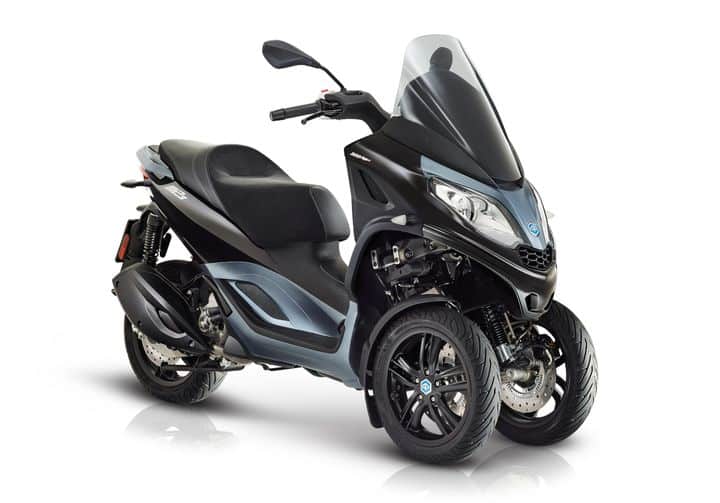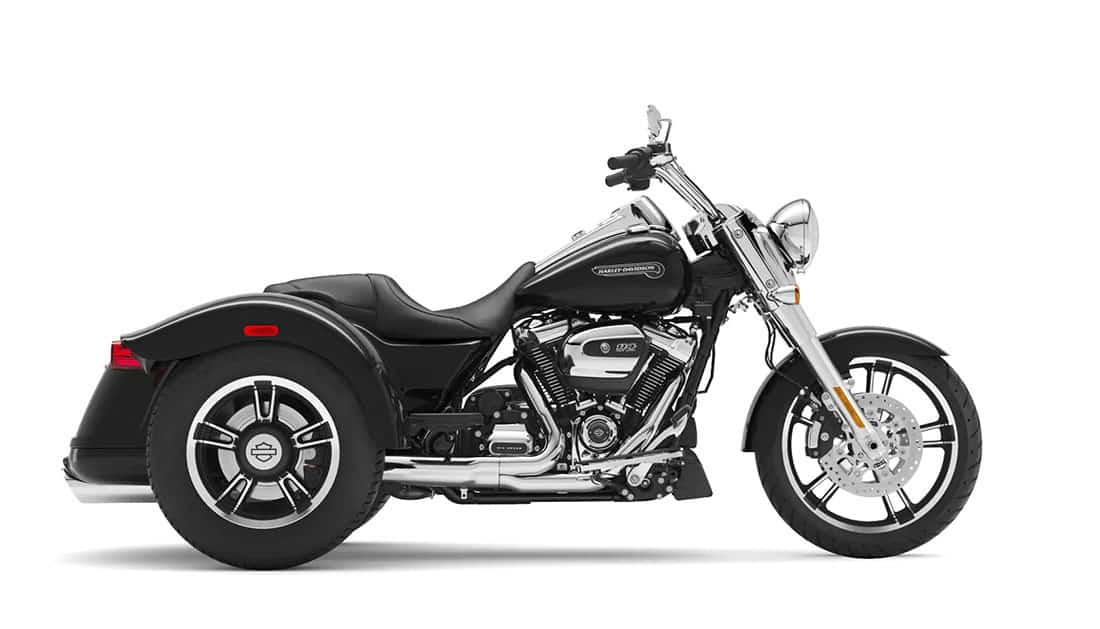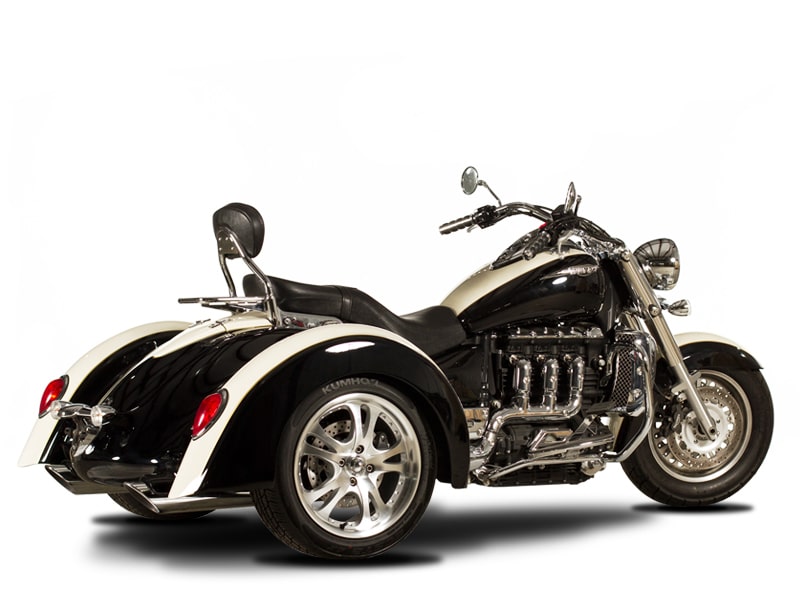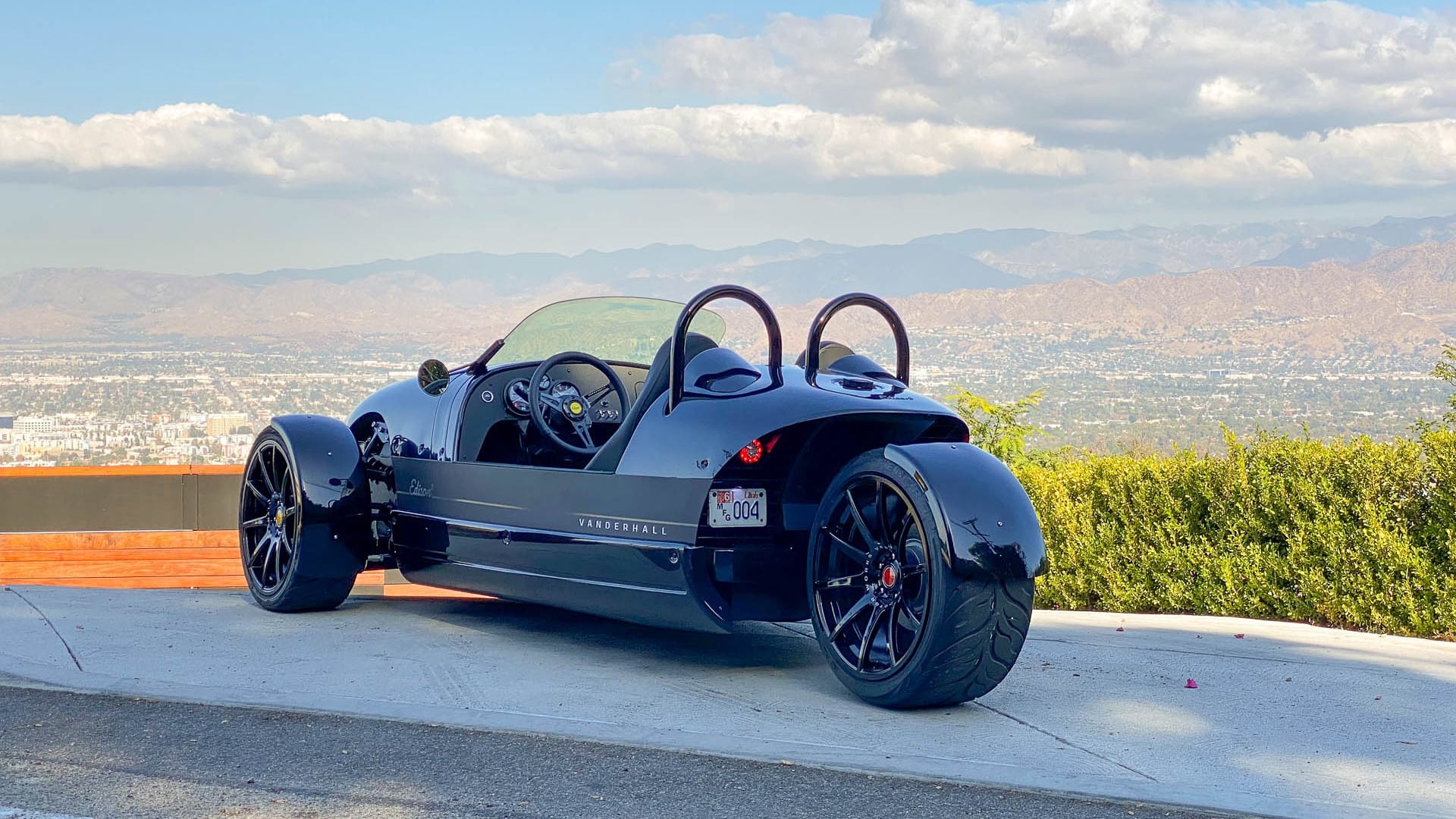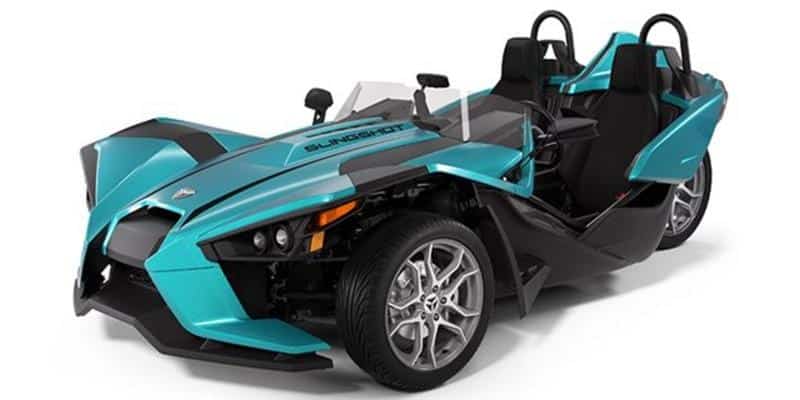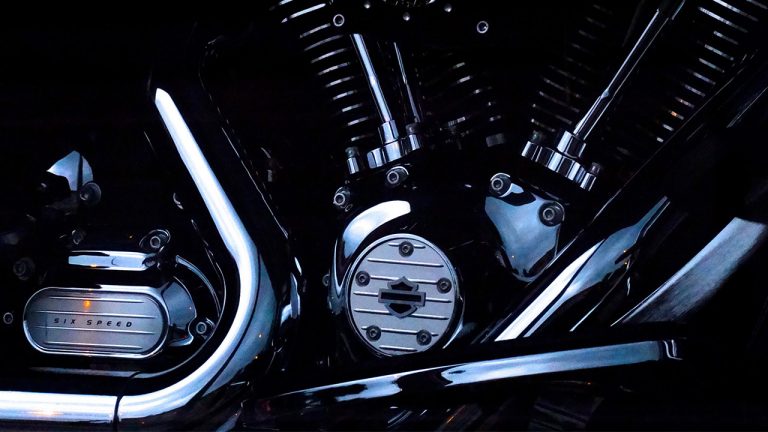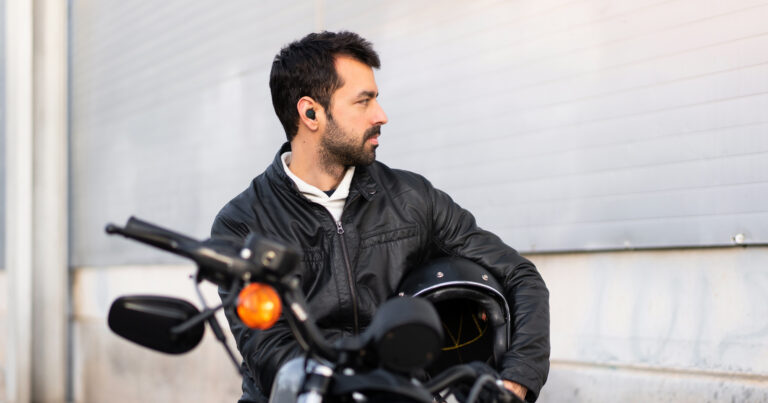3 Wheel Scooters and 3 Wheel Motorcycles
This post may contain affiliate links. That means if you click and buy, we may receive a small commission (at zero cost to you). Please see our full disclosure policy for details.
Three wheeled scooters and motorcycles have gained increasing popularity in the recent years among riders of all ages and abilities.
Offering a unique blend of stability, maneuverability, and practicality, these vehicles have carved out a niche in the market and are gaining recognition as a viable alternative to traditional two-wheel motorcycles.
This article explores the evolution, design, benefits, and future potential of 3-wheel scooters and motorcycles, highlighting their growing impact on the transportation sector.
A Brief History of 3 Wheeled Motorcycles
Early Beginnings
The history of 3 wheel scooters and motorcycles dates back to the early 20th century. Initially, these vehicles were developed for utility rather than recreational purposes, providing practical solutions for transportation and goods delivery.
1900s: The First 3 Wheelers
The concept of 3 wheel vehicles emerged in the early 1900s. One of the earliest examples is the 1910 Morgan Three-Wheeler.
Developed by H.F.S. Morgan in the United Kingdom, the Morgan Three-Wheeler featured a single rear wheel driven by a V-twin engine and two wheels at the front for steering.
This vehicle was popular due to its simplicity, affordability, and relatively good performance for its time.
1930s: Commercial Applications
The 1930s saw the introduction of 3 wheel vehicles designed for specific commercial applications.
The Harley-Davidson Servi-Car, introduced in 1932, was a notable example. It was initially designed for the automotive service industry, enabling mechanics to deliver and pick up customers’ cars.
The Servi-Car also found use in police work and various delivery services, demonstrating the versatility and utility of 3 wheel designs.
Mid-20th Century Developments
The mid-20th century witnessed further innovations in 3 wheel vehicle design, driven by advancements in automotive engineering and changing transportation needs.
1950s-1960s: Expanding Uses
During the 1950s and 1960s, 3 wheel vehicles became more widespread, particularly in Europe and Asia.
In Italy, Piaggio, known for its Vespa scooters, developed the Ape (pronounced “ah-peh”), a three-wheel light commercial vehicle introduced in 1948. The Ape, meaning “bee” in Italian, was designed for transporting goods in narrow urban streets.
Its success highlighted the practicality and economic benefits of 3 wheel designs for small businesses.
1970s: Recreational Use and Innovation
The 1970s saw a shift towards recreational use of 3 wheel vehicles. Manufacturers began experimenting with designs that offered more than just utility, focusing on creating a fun and unique riding experience.
During this period, Honda introduced the ATC90 in 1970, an all-terrain trike that became popular for recreational use and off-road riding.
Modern Developments
The late 20th and early 21st centuries brought significant advancements in technology and design, leading to the development of modern three wheel scooters and motorcycles that offer enhanced stability, safety, and performance.
1980s-1990s: Technological Advancements
In the 1980s and 1990s, technological advancements in materials, engineering, and safety features began to influence 3 wheel vehicle designs, including the development of 3 wheel mobility scooters.
These improvements made the vehicles more reliable, efficient, and appealing to a broader audience.
During this period, manufacturers like Can-Am, a division of Bombardier Recreational Products (BRP), began exploring the potential of 3 wheel motorcycles for recreational and touring purposes.
2000s: Rise of the Reverse Trike
The early 2000s marked the rise of the reverse trike, a design with two wheels at the front and one at the rear.
This configuration provided superior stability and handling, particularly in corners. The Piaggio MP3, introduced in 2006, was one of the first widely successful three wheeled scooters.
Its innovative tilting mechanism allowed the front wheels to lean independently, offering a riding experience similar to that of a traditional motorcycle while enhancing stability and safety.
2010s: Mainstream Popularity
The 2010s saw 3 wheel motorcycles gain mainstream popularity. Can-Am’s Spyder series, introduced in 2007, became a major player in the market, offering a range of models designed for different riding styles, from sport to touring.
Yamaha also entered the market with the Niken in 2018, featuring Leaning Multi-Wheel (LMW) technology that allowed the two front wheels to lean in unison, providing exceptional grip and cornering stability.
Current Trends and Future Prospects
Today, 3 wheeled scooters motorcycles continue to evolve, driven by advances in technology and changing consumer preferences.
Key trends include the development of electric and hybrid models, the integration of smart features, and the growing emphasis on safety and environmental sustainability.
Electric and Hybrid Models
As environmental concerns become more pressing, manufacturers are investing in electric and hybrid 3-wheeled vehicles.
Models like the Vanderhall Edison 2 and the Arcimoto FUV demonstrate the potential for clean, efficient, and high-performance 3 wheeled electric vehicles. These models also offer impressive weight capacity, making them suitable for a wide range of users.
Smart Features and Connectivity
Modern 3 wheel motorcycles are increasingly equipped with smart features, such as advanced rider aids, connectivity options, and integrated navigation systems.
These enhancements improve the overall riding experience, making these vehicles more convenient and enjoyable to use.
Safety and Stability
Safety remains a key focus for manufacturers, with ongoing advancements in braking systems, traction control, and stability programs.
These features help make 3 wheel vehicles more accessible to a wider range of riders, including those who may find traditional motorcycles challenging to handle.
Modern Developments: Design and Engineering of 3 Wheel Motorcycles
In the past few decades, the design and engineering of 3 wheel motorcycles have undergone significant advancements.
Structural Design
Reverse Trikes vs. Traditional Trikes
The basic structure of 3-wheel scooters can be categorized into two main types: reverse trikes and traditional trikes.
Reverse Trikes: These have two wheels at the front and one at the rear. This configuration is praised for its superior stability and handling, especially during cornering.
Reverse trikes are often designed with tilting mechanisms that allow the front wheels to lean into turns, mimicking the dynamics of a two-wheeled motorcycle while maintaining enhanced stability.
Traditional Trikes: These have one wheel at the front and two at the rear. While they offer different handling characteristics, they provide a more classic trike experience, often favored by those looking for a traditional design with modern comforts.
Key Components
Engine Types and Configurations
Modern 3 wheel scooters and motorcycles feature a variety of engine types and configurations to suit different performance needs:
Single-Cylinder Engines: Common in smaller, urban-focused models. These engines offer simplicity, efficiency, and adequate power for city commuting.
Multi-Cylinder Engines: Found in larger, performance-oriented models. Multi-cylinder engines provide higher power output and smoother performance, suitable for touring and spirited riding.
Suspension Systems
The suspension system is crucial in 3 wheel vehicle design, impacting both ride comfort and handling. Modern 3 wheeled scooter motorcycle often utilize advanced suspension technologies:
Independent Suspension: Each wheel, particularly the front wheels in reverse trikes, typically has its own suspension system.
This setup allows the wheels to move independently, improving ride quality and stability over uneven surfaces.
Tilting Mechanisms: In models like the Yamaha Niken and Piaggio MP3, the suspension includes a tilting mechanism that enables the front wheels to lean into turns, providing a more dynamic and motorcycle-like riding experience.
Brake Systems and Safety Features
Modern 3 wheeled scooters motorcycles are equipped with advanced braking systems to ensure rider safety:
Anti-Lock Braking System (ABS): Prevents the wheels from locking up during braking, reducing the risk of skidding and improving control.
Electronic Stability Control (ESC): Helps maintain vehicle stability by automatically adjusting the brake and throttle during challenging riding conditions.
Traction Control: Manages the power delivery to prevent wheel spin, particularly useful on slippery surfaces.
Aesthetic and Functional Design
Ergonomics and Rider Comfort
Ergonomics play a significant role in the design of modern 3 wheeled scooters motorcycles. Manufacturers focus on:
Seating Position: Optimized for rider comfort, reducing fatigue on long rides. Seats are often designed to provide ample support and cushioning.
Control Layout: Intuitively placed handlebars, pedals, and controls ensure easy access and operation, enhancing overall rider experience.
Wind Protection: Features like adjustable windshields and fairings improve aerodynamics and protect riders from wind and weather elements.
Storage Solutions
Practicality is a key consideration, especially for those using these vehicles for commuting or touring:
Under-Seat Storage: Common in scooters, providing space for helmets and small personal items.
Rear Trunks and Saddlebags: Found in touring models like the Can-Am Spyder, offering significant storage capacity for long-distance travel.
Glove Compartments and Cargo Racks: Additional storage options that enhance the practicality of these vehicles.
Front Basket: An essential component for carrying personal items, making the scooter more practical for everyday use.
Customization Options
Customization is an important aspect for many riders, allowing them to personalize their vehicles:
Aesthetic Modifications: Options include custom paint jobs, decals, and lighting enhancements.
Performance Upgrades: Riders can choose from a variety of aftermarket parts, such as exhaust systems, suspension upgrades, and performance chips.
Comfort Enhancements: Accessories like heated grips, custom seats, and enhanced audio systems provide additional comfort and convenience.
Role of Modern Technology
Smart Features and Connectivity
The integration of smart technology has significantly enhanced the functionality and appeal of modern 3 wheeled scooters motorcycles:
Integrated Navigation Systems: GPS systems that provide real-time navigation and route planning.
Bluetooth Connectivity: Allows riders to connect their smartphones for music, calls, and notifications.
Advanced Rider Aids: Features like adaptive cruise control, blind-spot monitoring, and collision warning systems improve safety and convenience.
Electric and Hybrid Models
Environmental concerns and technological advancements have led to the development of electric and hybrid 3 wheeled scooter motorcycle:
Hybrid Models: Combining internal combustion engines with electric motors, these models provide extended range and improved fuel efficiency while reducing emissions.
Electric Models: Vehicles like the Arcimoto FUV offer zero-emission transportation with impressive efficiency and performance.
Additionally, both electric and hybrid models often feature easy disassembly, enhancing their portability and convenience for users.
Benefits of 3 Wheeled Scooters
Enhanced Stability and Safety
One of the primary advantages of 3-wheel mobility scooters is their enhanced stability, providing improved balance for riders compared to traditional 2-wheel motorcycles.
Additionally, these vehicles often come equipped with safety features that are not found in their 2-wheel counterparts, making them a safer option for many riders. Their performance in various weather conditions further adds to the safety aspect.
Accessibility and Ease of Use
The appeal of 3 wheel motorcycle extends to new riders and individuals with mobility challenges, as they offer a level of accessibility and ease of use that traditional motorcycles may not. Features like adjustable armrests and high-back captain’s seats make these scooters super easy to use comfortably.
However, understanding the licensing and legal considerations surrounding the use of these vehicles is still essential.
Practicality and Versatility
Their practicality for commuting and urban mobility, as well as their suitability for touring and long-distance travel, make 3 wheel motorcycles a versatile choice for riders. Additionally, their ability to carry significant weight, combined with a lightweight design, makes them easy to carry or transport in vehicles, thus appealing to users looking for robust and convenient mobility solutions.
Additionally, the environmental impact and fuel efficiency of these vehicles contribute to their appeal in a time of increased focus on sustainability.
Future Prospects and Innovations
Emerging Technologies
Advances in electric and hybrid models, as well as the integration of smart features and connectivity, signal a promising future for 3 wheel motorcycle. These technological innovations are poised to drive the industry forward. New models also boast impressive speed capabilities, with top speeds ranging from 4 mph to 16 mph, enhancing overall performance and user enjoyment.
Market Trends
Understanding consumer preferences and demographics, along with predictions for market growth and regional developments, is crucial for the future positioning of 3 wheel scooters and motorcycles in the market.
Challenges and Opportunities
The industry faces regulatory and safety challenges that must be addressed for long-term sustainability.
However, these challenges also present opportunities for innovation and market expansion, paving the way for further growth and development in the sector.
By considering these aspects in detail, a comprehensive understanding of the evolution, design, benefits, and future prospects of 3 wheel scooters can be obtained, providing valuable insights for enthusiasts, manufacturers, and consumers alike.
Types of 3 Wheel Motorcycles
Three wheel motorcycles come in various designs, each offering unique features and benefits. The two primary categories are reverse trikes and traditional trikes, with subcategories based on their specific configurations and functionalities. Understanding these types can help riders choose the right vehicle for their needs.
1. Reverse Trikes
Reverse trikes have two wheels at the front and one at the rear. This configuration provides superior stability and handling, especially in corners, making them a popular choice for those seeking a blend of performance and safety.
Tilting Reverse Trikes
Tilting reverse trikes feature a mechanism that allows the front wheels to tilt independently, enabling the vehicle to lean into turns like a traditional motorcycle. This design enhances cornering performance and provides a more dynamic riding experience.
Examples:
Yamaha Niken: The Niken uses Leaning Multi-Wheel (LMW) technology, allowing the two front wheels to lean in unison, offering superior grip and stability in corners.
Piaggio MP3: Known for its urban practicality, the MP3’s tilting mechanism provides enhanced stability and a smooth ride over uneven surfaces.
Non-Tilting Reverse Trikes
Non-tilting reverse trikes maintain a fixed position of the front wheels, providing a stable and secure ride without the need to lean into turns. These models are often favored for their simplicity and ease of use.
Examples:
Can-Am Spyder: The Spyder lineup features a non-tilting design with advanced safety features like traction control and electronic stability control, making it ideal for touring and recreational riding.
Traditional Trikes
Traditional trikes have one wheel at the front and two at the rear. This configuration offers a distinct riding experience and is particularly popular among riders who prefer a classic trike design.
Fixed Rear Axle Trikes
Fixed rear axle trikes have a solid axle connecting the two rear wheels, which move together as a single unit. This design is robust and straightforward, offering stability and reliability.
Examples:
Harley-Davidson Freewheeler: This trike features a fixed rear axle and is designed for long-distance cruising, offering a comfortable and stable ride with ample storage.
2.2 Independent Suspension Trikes
Independent suspension trikes have each rear wheel mounted on an independent suspension system. This design provides a smoother ride and better handling, especially on uneven surfaces.
Examples:
Triumph Rocket 3 Trike: Featuring independent rear suspension, this trike offers enhanced comfort and handling, combined with the powerful performance of the Rocket 3’s engine.
3. Hybrid and Electric Trikes
With growing environmental concerns and advancements in technology, hybrid and electric 3 wheeled scooters motorcycles are becoming increasingly popular. These models offer reduced emissions and improved fuel efficiency.
Examples:
Vanderhall Edison 2: An electric reverse trike, the Edison 2 combines innovative design with eco-friendly technology, providing a clean and efficient ride.
Arcimoto FUV: A fully electric vehicle designed for urban commuting, the Arcimoto FUV offers the benefits of a 3-wheeled design with zero emissions and impressive efficiency.
4. All-Terrain Trikes
All-terrain trikes are designed for off-road use, featuring rugged construction, enhanced suspension systems, and durable tires. These vehicles are built to handle rough terrains and challenging conditions.
Examples:
Polaris Slingshot: Although primarily designed for on-road use, the Slingshot’s robust build and powerful engine make it capable of handling light off-road conditions
.
5. Mobility and Accessibility Trikes
These trikes are specifically designed for individuals with mobility challenges, offering features like low step-through frames, automatic transmissions, and ergonomic controls. Similarly, 3-wheel mobility scooters provide excellent maneuverability for indoor use, cost-effectiveness compared to 4-wheel scooters, and considerations like speed and charge range that are crucial for potential buyers.
Examples:
Honda Gyro Canopy: A popular choice in many urban areas, the Gyro Canopy provides stability and ease of use, with a design that accommodates riders with limited mobility.
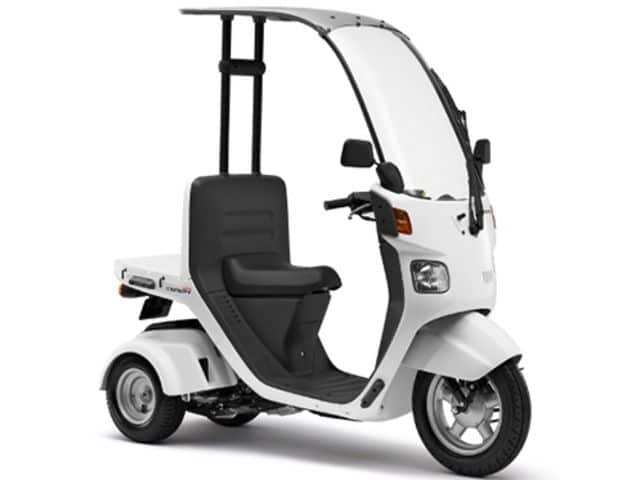
Frequently Asked Questions (FAQ)
1. What are the main advantages of 3-wheel motorcycles compared to traditional 2-wheel motorcycles?
The primary advantages include enhanced stability, especially at low speeds and when stopping, making them safer and more accessible for new riders.
The extra wheel also provides better balance and traction, particularly in adverse weather conditions. Additionally, 3 wheeled scooter motorcycle often come with advanced safety features such as ABS and traction control, further improving rider safety.
2. Do I need a special license to ride a 3 wheel scooter or motorcycle?
Licensing requirements for 3 wheel motorcycle vary by region. In some places, a standard car driver’s license is sufficient to operate a 3 wheel scooter, while others may require a motorcycle endorsement.
It’s important to check the specific regulations in your area before purchasing or riding a 3 wheeled vehicle.
3. Are 3 wheel motorcycles suitable for long-distance travel?
Yes, many 3 wheel motorcycles are designed with long-distance travel in mind. Models like the Can-Am Spyder RT and Piaggio MP3 offer features such as comfortable seating, ample storage, and advanced suspension systems, making them well-suited for touring. Additionally, these scooters are designed for easy transport, with portable models that can be easily disassembled or folded for convenient travel.
These vehicles provide a comfortable and stable ride, which is ideal for extended journeys.
4. How do 3 wheel motorcycles perform in terms of fuel efficiency?
3-wheel scooters and motorcycles generally offer good fuel efficiency, comparable to or better than traditional 2-wheel motorcycles.
Smaller engine models, such as the Piaggio MP3, are particularly efficient and ideal for urban commuting.
Advances in electric and hybrid technology are also being integrated into 3-wheel vehicles, promising even greater fuel efficiency and reduced environmental impact in the future.
5. Can 3 wheel scooters and motorcycles be customized?
Yes, 3 wheel motorcycles can be customized just like their 2-wheeled counterparts.
Many manufacturers offer a range of accessories and customization options, including luggage systems, performance parts, and aesthetic enhancements.
Customization allows owners to tailor their vehicles to their specific needs and preferences, whether for improved performance, additional storage, or a unique look.
Conclusion
As the landscape of personal transportation continues to evolve, 3-wheel motorcycles are carving out a significant niche.
Their blend of stability, safety, and performance offers a compelling alternative to traditional 2-wheel motorcycles and 4-wheel vehicles.
With ongoing technological advancements and growing market interest, the future looks promising for these versatile vehicles.


